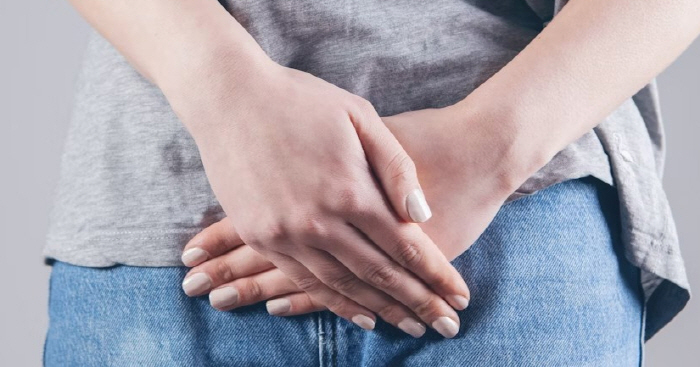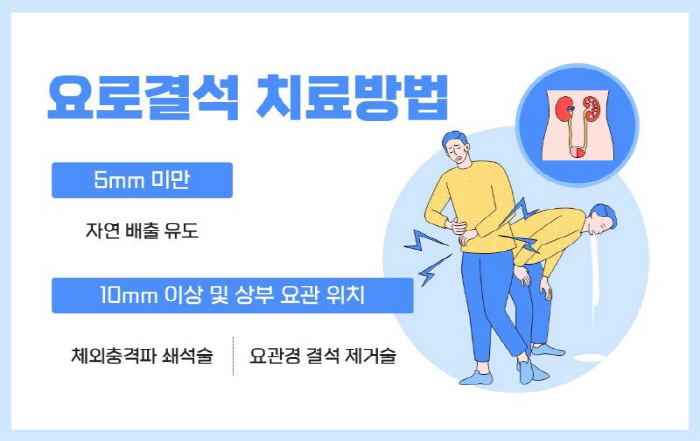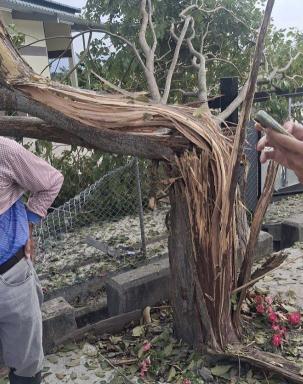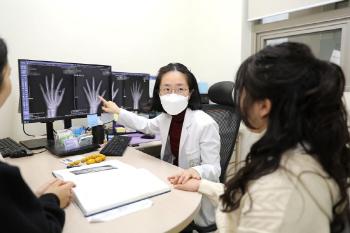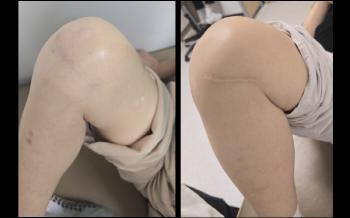Urinary stones like childbirth pain, avoid this food...Himchan Hospital's Water Intake Important
|
Urinary stones have the highest number of patients in the summer from July to August. According to the Health Insurance Review and Assessment Service's statistics on diseases of public interest, 335,628 patients visited the hospital for urinary tract absences in 2023, with the highest number of patients in July (44,419) and August (48,468). July and August also recorded the highest number of cases in the year in 2021 and 2022, respectively.
Lee Jang-hee, head of the urology department at Himchan General Hospital in Incheon, said, `In summer, there is a lot of sweat discharge, so the amount of urine decreases due to lack of water in the body, and the environment is easy to form stones due to the concentration of urine. Pain varies depending on the location where the stones are blocked, but flank or abdominal pain is severe, and hematuria also occurs.'
◇ Lower abdominal pain accompanied by hematuria...If left unattended, it develops into kidney failure
In summer, even if you drink water, a large amount of sweat is released, which is likely to lead to a lack of water. When urine is concentrated due to insufficient moisture, urinary crystals such as calcium, phosphate, and minerals in urine aggregate and produce stones. In addition, when exposed to a lot of sunlight in the summer, vitamin D production becomes active and affects calcium metabolism, and this process is also known to increase the risk of stones. Patients with obesity and metabolic diseases have an increased incidence of urinary stones due to increased excretion of oxalic acid, uric acid, sodium, and phosphoric acid, which cause stones.
Urinary stones are classified into kidney stones, ureteral stones, bladder stones, and ureteral stones depending on which part of the urinary tract occurred. The pain is known for its extreme pain, which usually causes intense pain such as stabbing with a knife or awl in the side or abdomen and is not easily sedated by painkillers.
In severe cases, pain may spread to the lower abdomen, and hematuria, turbidity, and frequent urination may be accompanied. When accompanied by infection, symptoms such as high fever, chills, vomiting, and indigestion may be added. If a person who was usually healthy suddenly feels flank pain, it is recommended to suspect urinary stones and seek medical treatment. A stone in the lower part of the ureter or bladder causes discomfort in the perineum, and a stone in the lower right ureter may be mistaken for appendicitis, so care should be taken in diagnosis. Lack of water is the biggest cause, but excessive intake of animal protein, inappropriate eating habits, urinary tract infections, urinary tract deformities, and family history can also be the cause.
|
Urinary stone treatment is largely classified into three categories. Small stones less than 5 mm can promote excretion with large amounts of water intake or drugs. However, if the stone size is more than 10mm or the location of occurrence is the upper ureter, it is difficult to expect natural discharge, requiring a procedure or surgical treatment. Extracorporeal shock wave lithotripsy is a procedure in which external shock waves are concentrated on stones to crush and discharge stones from the body, and there is no need for separate anesthesia or hospitalization, so patients are less burdened. A typical surgical treatment is ureteroscopic stone removal, which uses an endoscope to laser-remove stones.
Among them, ureteroscopic stone removal is applied when the stone is large or needs to be removed immediately due to infection, and when the stone is hard and is less likely to be crushed by extracorporeal shock wave lithotripsy, which is known as the most obvious treatment. A thin endoscope (요) is inserted through the urethra to approach the stones and then crushed with a laser, which can be removed without leaving any remaining stones after surgery. The patient may experience some discomfort because the ureter stent is first inserted to expand the ureter and reduce pain, and then the surgery is performed within a few days. Recently, however, if the underlying disease is not severe and infection or fever is not accompanied, and the risk of anesthesia is not high, surgery is performed immediately on the day of the visit to minimize the discomfort of patients.
◇Share 2-3 liters of water a day...Reduce intake of high-protein foods, chocolate, etc
The most important way to prevent urinary stones is to drink proper water. It is recommended to share about 2 to 3 liters of water a day. Excessive sodium intake increases the amount of calcium that escapes into the urine, increasing the probability of urinary stones, so you should not exceed 5g per day. Reduce intake of high-protein foods, chocolate, spinach, and nuts high in oxal. On the other hand, fruits and vegetables rich in citric acid, such as oranges, tangerines, and lemons, should be consumed sufficiently because they inhibit the formation of calcium stones.
Director Lee Jang-hee advised that `people with urinary tract stones increase their recurrence rate by about 7% every year.' `Although prevention methods vary depending on the composition of stones, an important common prevention method is that people at high risk of stones should share about 2 to 3 liters of water per day due to sufficient water intake.'
|
This article was translated by Naver AI translator.
